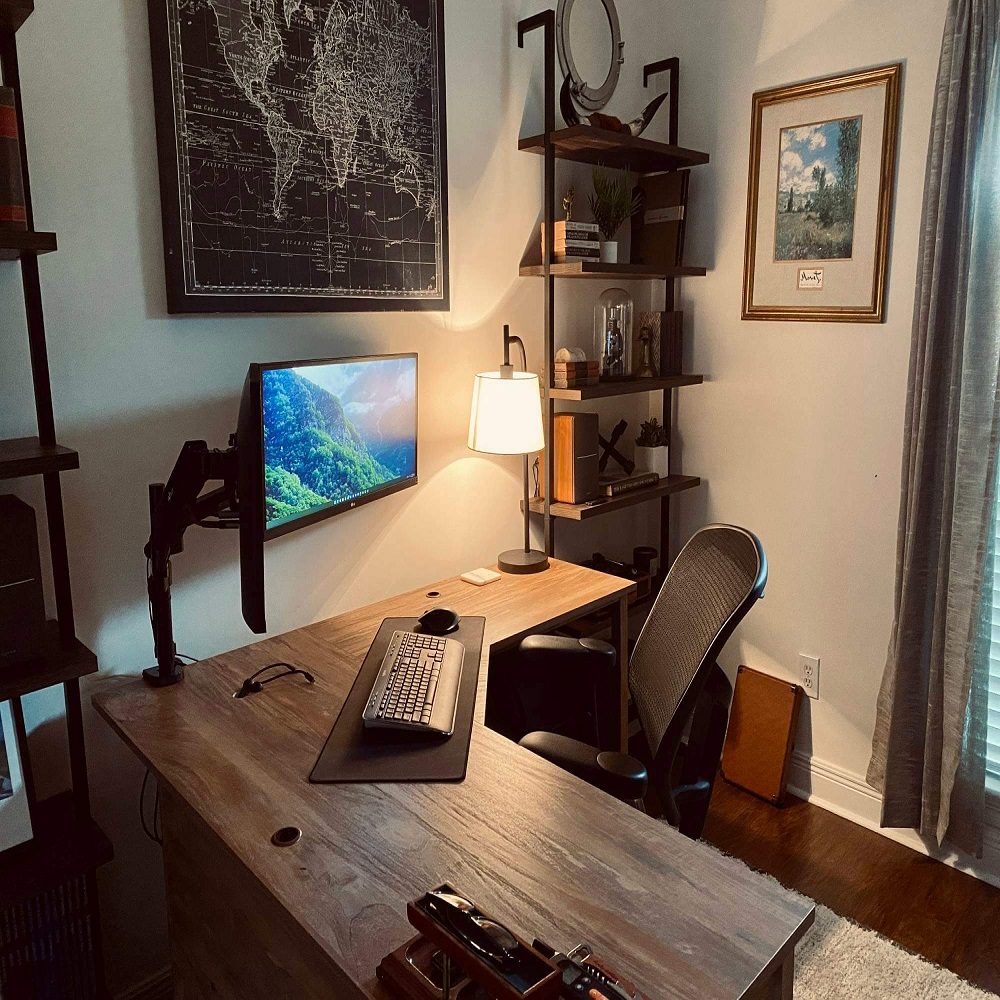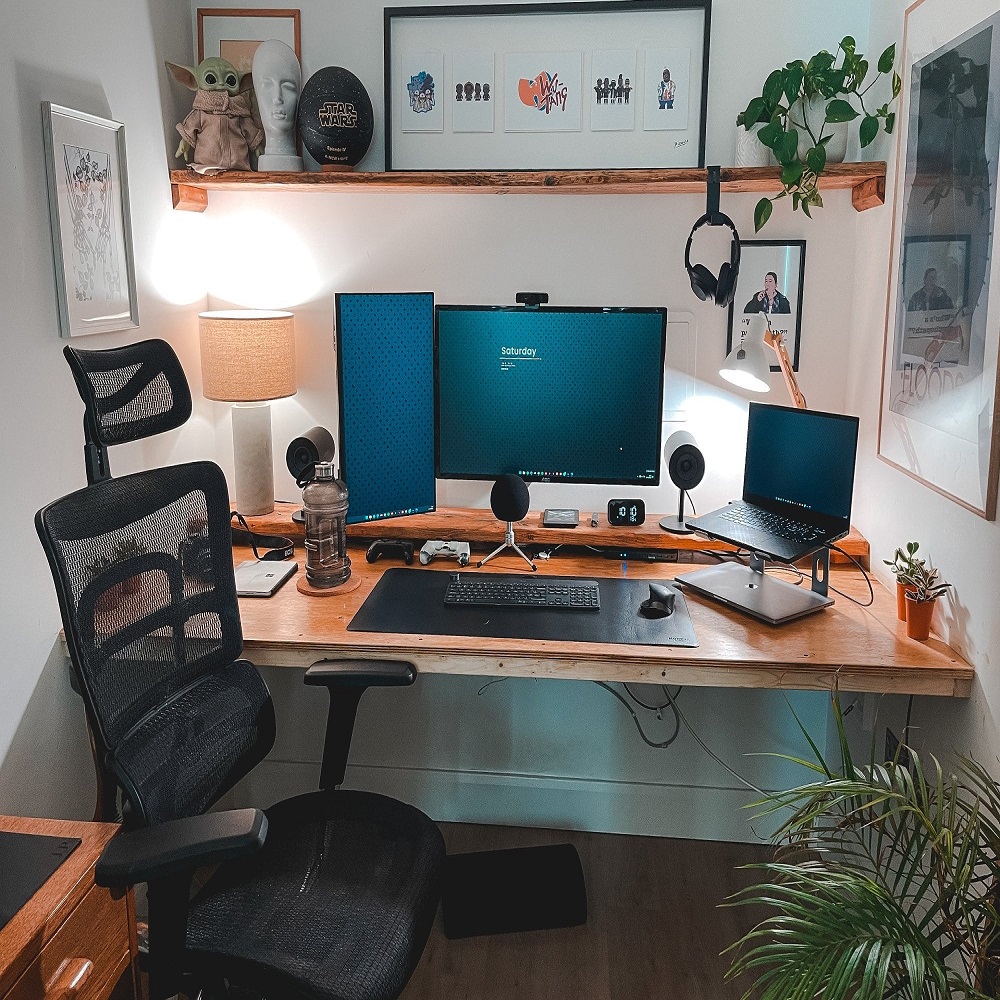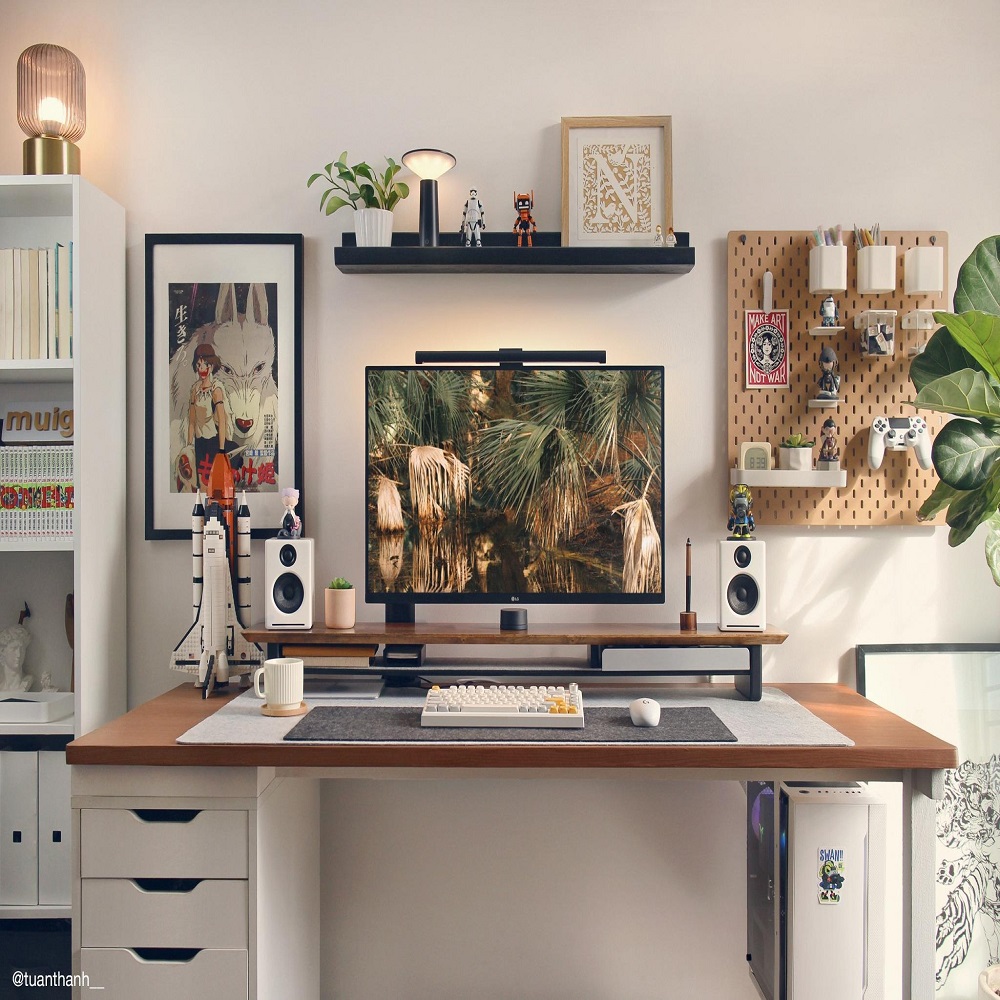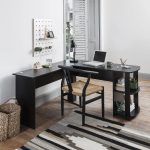Importance of Ergonomics in Office Desk Setup
Creating a productive workspace starts with ergonomics. Your office desk setup must have this focus. Ergonomics is the study of people’s efficiency in their work environment. When ignored, it can lead to discomfort, fatigue, and even injury. Consider these points for ergonomics:
- Adjustable Chair: Choose one that supports your back and allows your feet to rest flat on the floor.
- Monitor Height: Your screen should be at eye level. This prevents neck strain.
- Keyboard and Mouse Placement: They should be at a height where your elbows are at a comfortable angle.
- Desk Height: A desk height that aligns with your elbow height is ideal. This position helps avoid strain on your arms and shoulders.
A well-planned office desk setup that incorporates ergonomic principles can transform your workday. It leads to less pain, more productivity, and overall better health at work.
Remember to stand up and stretch regularly. Frequent micro-breaks reduce the risk of strain and injury. A good setup is not just about the correct furniture but also about how you use it throughout the day.

Essential Desk Accessories for Enhanced Productivity
To boost productivity, the right desk accessories are key. A functional office desk setup is not just about furniture. It includes accessories that enhance efficiency. Here are some essential desk accessories to consider:
- Document Holder: Keep important papers at eye level. This prevents unnecessary neck movement.
- Desk Organizer: It keeps supplies tidy. This reduces clutter and saves time.
- Monitor Stand: Besides adjusting height, it can offer storage for the keyboard.
- Task Lighting: Select adjustable desk lamps. They reduce eye strain and improve focus.
- Noise-Canceling Headphones: Block out distractions. They help maintain concentration in noisy environments.
- Desk Pad: This serves a dual purpose. It protects the desk surface and can define your workspace.
- Ergonomic Keyboard and Mouse: These reduce strain on your hands and wrists. Comfort is crucial for long work sessions.
By adding these accessories to your office desk setup, you’ll create a space conducive to high performance. Remember, a productive workspace helps maintain focus and energy levels throughout the day. So, invest in accessories that will aid in your efficiency.
The Role of Lighting in Creating a Productive Workspace
Lighting plays a pivotal role in any office desk setup. Proper lighting is not just about visibility. It affects your mood and energy levels too. A well-lit workspace can enhance focus and reduce eye strain. Here are key lighting tips to keep in mind:
- Natural Light: Embrace it where possible. Position your desk to benefit from daylight without causing glare on your screen.
- Task Lighting: Choose a desk lamp with adjustable brightness. Targeted light helps with detailed tasks without overwhelming the room.
- Ambient Lighting: Ensure overall lighting is neither too dim nor too bright. It should be comfortable for the eyes and complement your task lighting.
- Light Color: Opt for bulbs with a color temperature that boosts alertness. Cool white lights are often recommended for workspaces.
- Avoiding Shadows: Arrange lighting to minimize shadows. Shadows on your work area can cause eye strain and impact productivity.
- Glare Reduction: Use shades or diffusers on lamps. These can reduce harsh glares on your computer screen and desk surface.
Incorporating these lighting strategies into your office desk setup can lead to a significant boost in productivity. Keep adjustments simple to maintain flexibility throughout your workday. Remember, good lighting is about balance; it’s about creating a space where you can work comfortably for hours on end.
Organizing Your Desk for Efficiency and Focus
A tidy and well-organized desk can dramatically improve your productivity and focus. Here are several strategies for organizing your office desk setup to enhance efficiency:
- Decluttering: Start by removing all unnecessary items from your desk. Keep only what you need for daily tasks.
- Use of Desk Organizers: Capitalize on desk organizers to keep your supplies within easy reach. This prevents time wasted searching for items.
- Cable Management: Tuck away cables and cords with clips and ties to prevent a tangled mess. A clear space promotes better concentration.
- Systematic Layout: Place frequently used items like your phone and notebook on your dominant side. This makes them more accessible.
- Labeling Systems: Mark shelves and storage boxes. Labels help you find things fast and put them back easily.
- Prioritizing Work: Arrange your immediate tasks in a prominent spot. Less urgent matters can stay out of direct sight but still within reach.
- Clearing the Desk Daily: At the end of the day, spend a few minutes to clear your desk. This readies your space for a fresh start the next day.
An organized office desk setup saves time and reduces distractions. It encourages a focused and efficient workflow. As a result, you can tackle tasks with greater energy and less stress. Remember to reassess your organization system regularly to keep your desk optimized for peak productivity.

Selecting the Right Desk and Chair for Your Workstyle
Choosing the right desk and chair is crucial for a productive office desk setup. Different work styles and tasks require different kinds of furniture. Here’s how to make the best choice for your needs:
- Size and Shape of Desk: Match the desk size to your space and the nature of your work. A larger desk is ideal for projects that need multiple monitors or space for drawing and writing. Consider an L-shaped desk if your work involves multitasking and requires more surface area.
- Desk Material: Opt for materials that suit your work habits and aesthetics. Wood can offer warmth and durability, while metal and glass can bring a modern look and feel to your workspace.
- Adjustable Desks: Consider a standing desk or one that adjusts in height. This is great for changing your posture throughout the day and matching the desk height to your ergonomic needs.
- Chair Support and Adjustability: Invest in a chair that offers lumbar support. Look for one that adjusts in height, tilt, and armrest position to fit your body perfectly.
- Mobility of Chair: A chair with wheels is useful if you move around a lot at your desk. Ensure it rolls smoothly and doesn’t damage your floor.
- Matching Your Workstyle: Think about your daily activities. Do they require a static position, or do you need flexibility to move and stretch? Choose furniture that supports your specific workflow.
Your desk and chair are where you will spend most of your time working. Make sure they enhance your comfort and productivity. Remember, your office desk setup can greatly influence how you feel and how much you accomplish during your workday.
Cable Management Solutions for a Clutter-Free Desk
Cable clutter can quickly disrupt a peaceful and productive office desk setup. To maintain an organized space, consider these cable management solutions:
- Use Cord Clips: Stick these to the edge of your desk. They keep cables grouped and out of sight.
- Install Cable Trays: These go under your desk. They hide cords and keep them untangled.
- Cable Sleeves: Wrap these around a bundle of cords. It creates a single, neat line instead of a tangle.
- Desks with Built-In Cable Management: Some desks come with special compartments for cords.
- Wireless Devices: Choose wireless mice and keyboards. They reduce the number of cables on your desk.
- Label Your Cables: Use labels to mark each cord. You will know which device they connect to.
- Regular Cable Audits: Check often to remove unused cables. Only keep what you currently need.
By implementing these cable management solutions, you can avoid the frustration of a messy desk. A clutter-free area leads to a clearer mind and enhanced focus, making your office desk setup more conducive to productivity.
Incorporating Plants and Personal Items for a Motivating Environment
Adding plants to your office desk setup can work wonders. They bring life to your space. Plants improve air quality and can boost your mood. They make the environment more appealing and less stressful. Choose low-maintenance plants like succulents or snake plants. These require minimal care but offer maximum benefits.
Personal items also help in creating a motivating environment. Family photos, inspirational quotes, or a small award can serve as reminders. They remind you of your accomplishments and loved ones. This can inspire you to work harder. Personal touches make the space uniquely yours. They help to refresh your mind during long work hours.
It’s about balance. Don’t overcrowd your desk with plants and personal items. Keep them to a limit so they don’t become distractions. Arrange them where they can be seen easily but are not in the way. Your office desk setup should help you stay focused and driven. It should reflect your personality and work needs. Combine functionality with personal charm to create the best working environment.

Regular Maintenance and Updating Your Office Desk Setup
To sustain a high level of productivity, regular maintenance and updates to your office desk setup are necessary. Here’s what you should focus on:
- Regular Cleaning: Keep your desk clean. Wipe down surfaces to prevent dust build-up.
- Assess Ergonomics: Periodically, review your chair and desk ergonomics. Make adjustments for comfort.
- Update Accessories: Replace or add new accessories. They should serve your evolving work needs.
- Manage Cables: Readdress cable clutter often. Use management solutions to keep them organized.
- Test Lighting: Ensure your task lighting is adequate. Replace bulbs or fixtures as needed.
- Reorganize Often: Shift your layout as tasks change. Keep it functional and efficient.
- Incorporate New Technology: Upgrade to modern tools and devices that enhance productivity.
- Personal Space Refresh: Occasionally change personal items. New photos or plants can inspire productivity.
Your office desk setup is crucial for your work performance. With regular care, you can ensure it remains a space of efficiency and inspiration.

